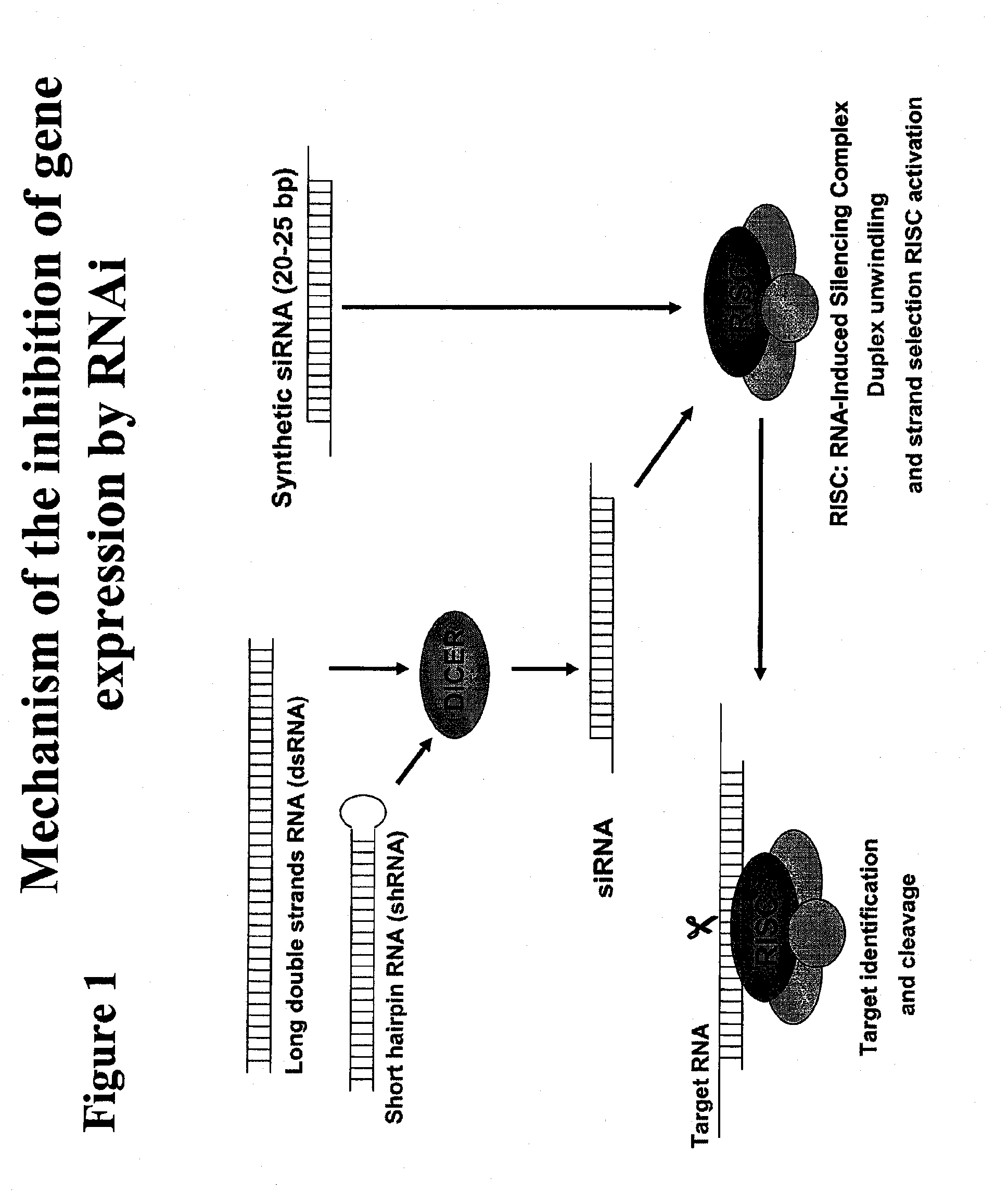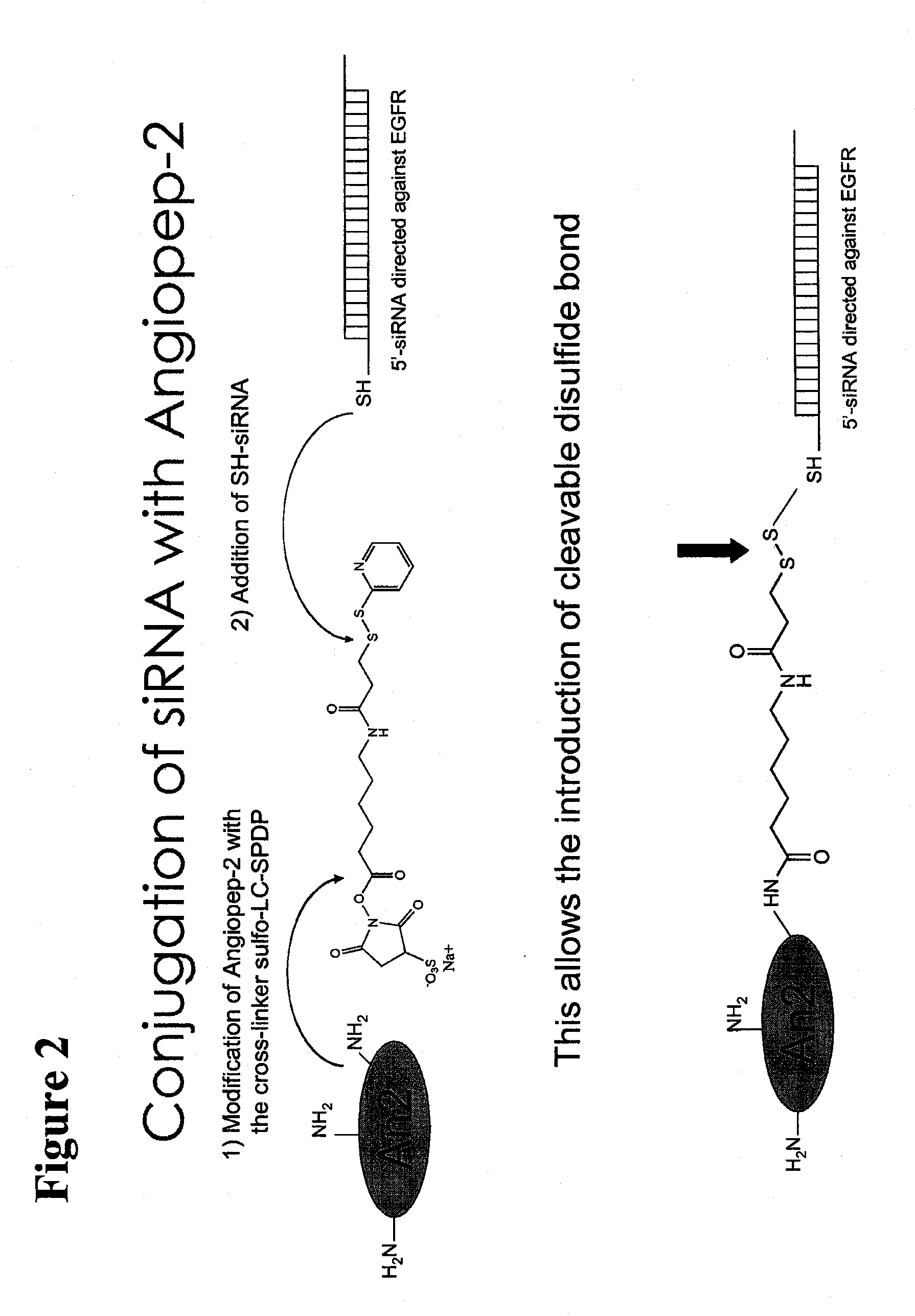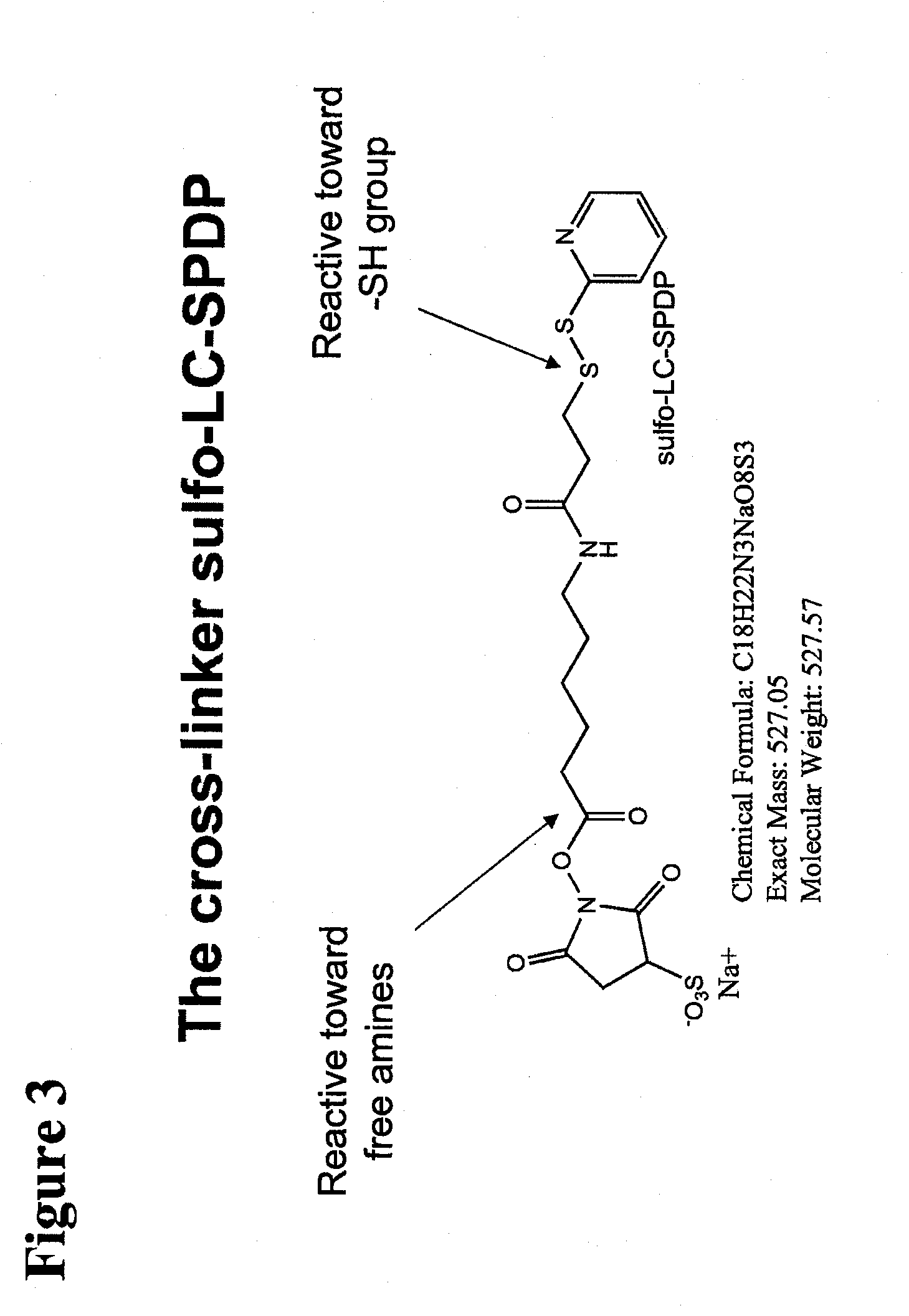Polypeptide-nucleic acid conjugates and uses thereof
a technology of polypeptides and nucleic acids, applied in the field of drug delivery, can solve the problems of lack of therapeutic options available for major neurological diseases, silencing of genes, and the blood-brain barrier (bbb) as a major obstacle, so as to prevent or reduce the appearance of diseases, and reduce the frequency of occurrence of diseases
- Summary
- Abstract
- Description
- Claims
- Application Information
AI Technical Summary
Benefits of technology
Problems solved by technology
Method used
Image
Examples
example 1
Polypeptide-Nucleic Acid Conjugation
[0168]35 μM of single-stranded RNA oligonucleotides encoding an epidermal growth factor receptor (EGFR) siRNA sequence that contains 5′ thiol groups are incubated in annealing buffer (100 mM potassium acetate, 30 mM HEPES-KOH at pH 7.2, 2 mM magnesium acetate) for 1 min at 90° C. followed by 1 h incubation at 37° C. Annealed siRNA oligonucleotides are desalted by incubating the hybridization mix for 7 min on ice in a pre-set 1% agarose in 100 mM glucose well in an Eppendorf tube (by leaving a 100 μL tip in the molten agarose mix and allowing it to set). The desalted siRNA molecules are supplemented with 1 volume of reaction buffer (10 mM HEPES, 1 mM EDTA, pH 8.0) to adjust the final concentration of the siRNAs to 17.5 μM. Equimolar amounts of EGFR siRNA, AngioPep-2 polypeptide, and the thiol oxidant diamide (Sigma, USA) are mixed and incubated for 1 h at 40° C. The polypeptide-nucleic acid conjugate / diamide solution is mixed with culture media and...
example 2
N-terminal and C-terminal Conjugation of siRNA to a Peptide Vector
[0169]As shown in FIG. 4, a peptide vector having an N-terminal or C-terminal cysteine (e.g., SEQ ID NOS:113 and 114) can be conjugated to an SH-siRNA directly or through a linker. Depending on the linker chosen, the linkage can be cleavable or non-cleavable. Here, the peptide vector is conjugated to the sense strand of the siRNA duplex.
example 3
Activity of siRNA Conjugates
[0170]The cleavable conjugate and non-cleavable siRNA conjugates were tested for silencing activity following transfection into a test system (FIG. 5). Conjugation of Angiopep-2 does not significantly affect the silencing activity of siRNA, as both linkers have IC50 values within 2-3 fold of that of the unconjugated siRNA. This silencing activity thus appears independent of the type of linker used (cleavable or non-cleavable).
PUM
| Property | Measurement | Unit |
|---|---|---|
| Fraction | aaaaa | aaaaa |
| Fraction | aaaaa | aaaaa |
| Fraction | aaaaa | aaaaa |
Abstract
Description
Claims
Application Information
 Login to View More
Login to View More - R&D
- Intellectual Property
- Life Sciences
- Materials
- Tech Scout
- Unparalleled Data Quality
- Higher Quality Content
- 60% Fewer Hallucinations
Browse by: Latest US Patents, China's latest patents, Technical Efficacy Thesaurus, Application Domain, Technology Topic, Popular Technical Reports.
© 2025 PatSnap. All rights reserved.Legal|Privacy policy|Modern Slavery Act Transparency Statement|Sitemap|About US| Contact US: help@patsnap.com



